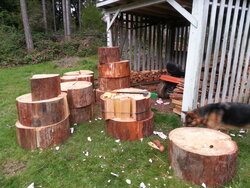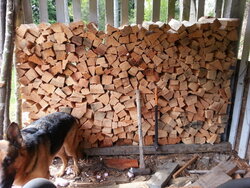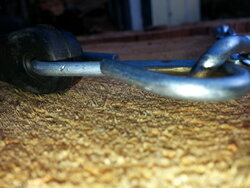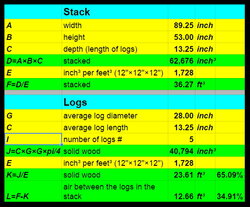Earlier this week a friend of mine unloaded 15 rounds of Douglas fir in front of my shed.

They arrived in halves and quarters. I wrap my 9 ft chain and a bungee cord around ¾ of a round (chain is too short for a full round)
Average diameter ot the original rounds was pretty exact 28" with a ±1" variation.
Rounds average 13¼" thickness.
You guys can calculate the volume of solid wood, but how much air will it be (or should be) between the logs in a properly stacked "rick"?
After splitting and stacked 5 rounds, did I get a "full rick" or a ⅓ of a " full cord" in my wood shed?
I will post the size numbers of my "rick-stack" later...well I already gave you the 13¼", and my Fiskars axe is 28½" end to end...

Ps. The short 13¼" logs is because of the design of my wood stove....

They arrived in halves and quarters. I wrap my 9 ft chain and a bungee cord around ¾ of a round (chain is too short for a full round)
Average diameter ot the original rounds was pretty exact 28" with a ±1" variation.
Rounds average 13¼" thickness.
You guys can calculate the volume of solid wood, but how much air will it be (or should be) between the logs in a properly stacked "rick"?
After splitting and stacked 5 rounds, did I get a "full rick" or a ⅓ of a " full cord" in my wood shed?
I will post the size numbers of my "rick-stack" later...well I already gave you the 13¼", and my Fiskars axe is 28½" end to end...

Ps. The short 13¼" logs is because of the design of my wood stove....








